Sentiment analysis helps us understand the feelings behind words in texts. It’s used in many areas like customer service, UX research, and social media monitoring.
This article will show you the basics of sentiment analysis and how to use it on the Userlytics platform.
What is Sentiment Analysis?
Sentiment analysis uses natural language processing (NLP) and computational linguistics to find and extract feelings from text. It shows whether the text is positive, negative, or neutral.
This method is vital for businesses and UX researchers to understand customer opinions and feedback clearly.
Using Sentiment Analysis on the Userlytics platform
Generating Transcriptions
The first step in order to perform Sentiment Analysis is to generate transcriptions of your study session. Here’s a step-by-step guide on how you can do that:
- Select the Study: On your Userlytics dashboard, choose the study for which you want to generate a transcription.
- Click on the “Sessions” option: On the left panel menu, click on the sessions link to view all session videos for the study.
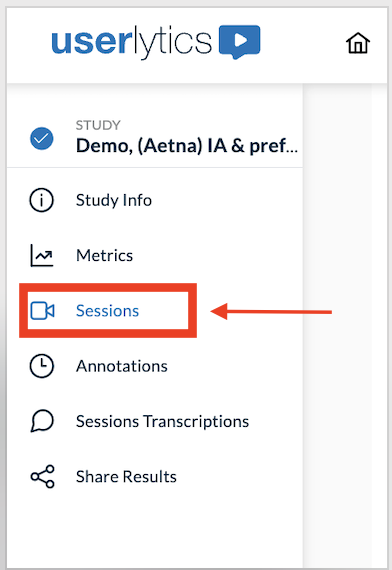
- Select Session: Select the session you wish to transcribe from the list.
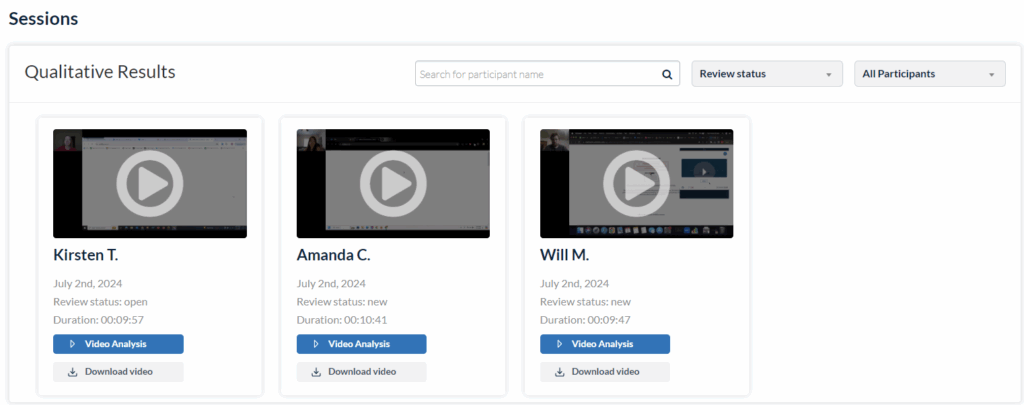
- Request Transcription: Click the “Transcription” tab on the right hand side of the screen, then click on “Request Transcription.”

- Receive Email Notification: Once the transcription is ready, you will receive an email notification.
- Access Transcription: Return to the transcription section and find the new button next to the session for which you requested the transcript.
- Browse and Search: Browse through the transcribed text, search for specific terms, and jump to specific moments. Create annotations if needed.
Utilizing Transcriptions for Sentiment Analysis
Now that your study has been transcribed, you can perform Sentiment Analysis. Here’s how to do it:
- Access Sentiment Analysis: Use the Sentiment Analysis tab on the right side of the screen of the study session.

- Request Sentiment Analysis: Click on the “Request Sentiment Analysis” button.

- Get Notified: The Analysis will take a few moments to process. You will get notified by email when it’s ready. You can also stay on the page and refresh it once it’s ready.
- Analyze Sentiment: There it is! The session transcription will be color-coded and available in the Sentiment Analysis tab of the session. Positive feedback will be highlighted in green, negative in red, and neutral in gray.
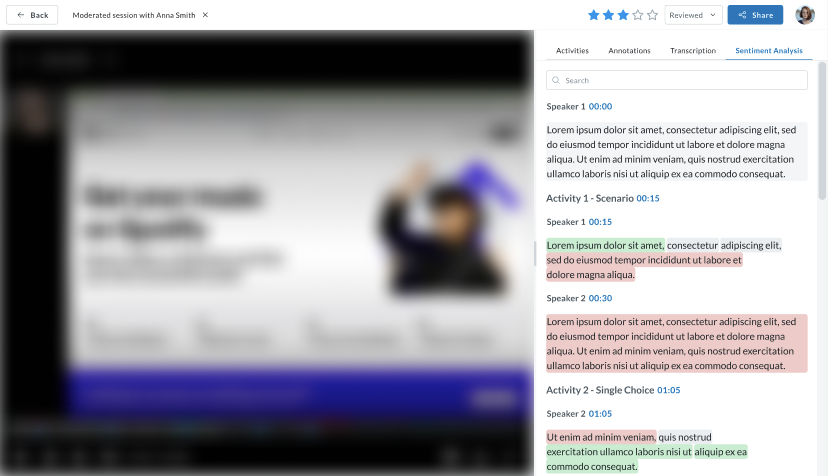
Transcripts are differentiated by speaker making it easy to visually follow conversations and distinguish between participant and moderator input.
You can also edit both transcript content and sentiment markers directly inline. If a sentiment label is incorrect, you can change it or even remove it entirely by clicking on the sentence and assigning a new sentiment mark.
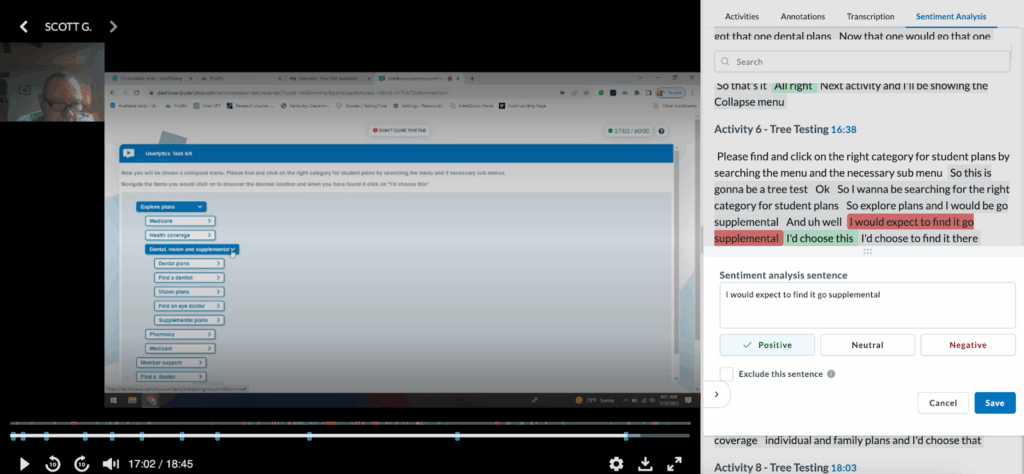
Sentences can also be excluded from sentiment analysis. To do so, simply click on a sentence and a dialogue box will appear. Check off the “Exclude this sentence” option in the edit modal and hit Save.
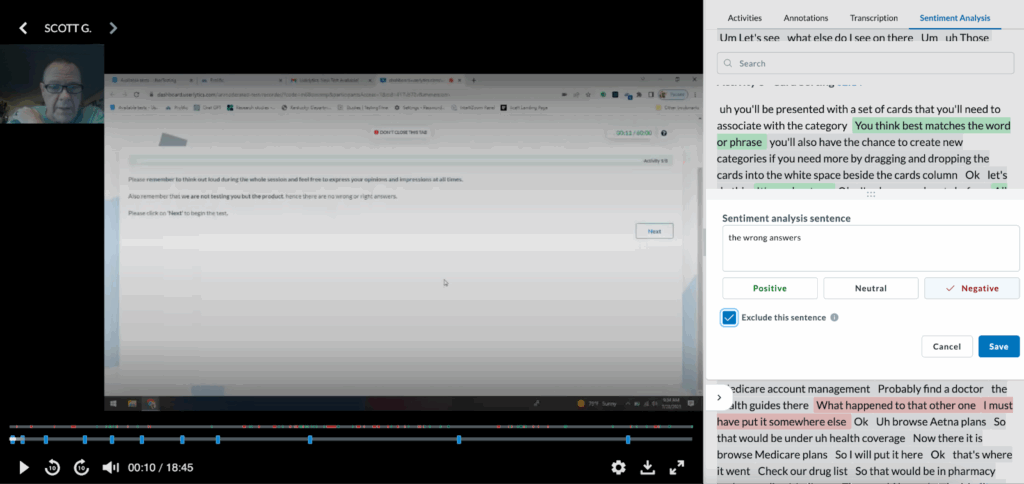
Additionally, the transcript includes full-text search functionality, allowing you to instantly locate any keyword or phrase. Just type it into the search bar at the top of the Sentiment Analysis panel and it will find and highlight it on the transcript.
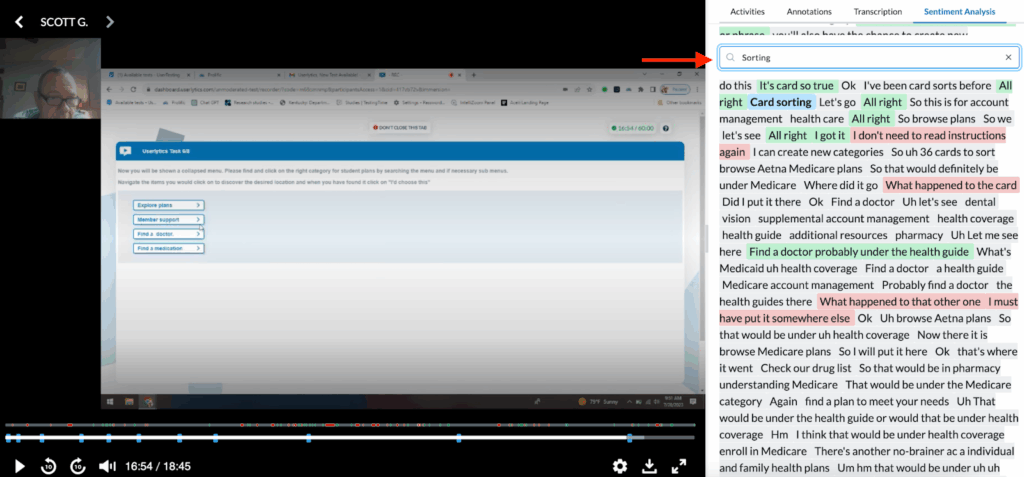
FAQ
1. What is sentiment analysis?
Sentiment analysis is a method to find the emotional tone of text, labeling it as positive, negative, or neutral. It helps understand what customers think and feel.
2. What are the benefits of using sentiment analysis on Userlytics?
Sentiment analysis on Userlytics helps you quickly understand user emotions and opinions. This insight can improve your customer service, enhance your users’ experience, and help you make smart design decisions.
3. How accurate is the sentiment analysis on Userlytics?
The accuracy of sentiment analysis on Userlytics is high, thanks to advanced NLP techniques and continuous algorithm improvements. However, it is important to review and validate the results, especially for complex or nuanced feedback.
4. Can sentiment analysis handle different languages on Userlytics?
Yes, the Userlytics platform supports sentiment analysis in multiple languages. It uses language-specific algorithms to ensure accurate sentiment classification for user feedback in various languages.
